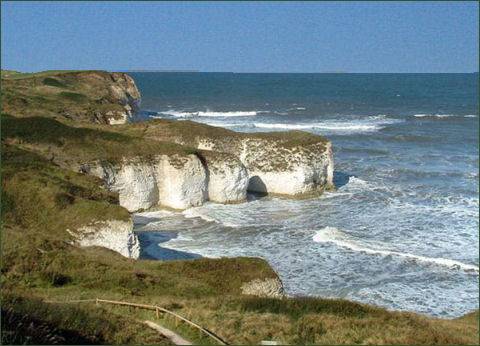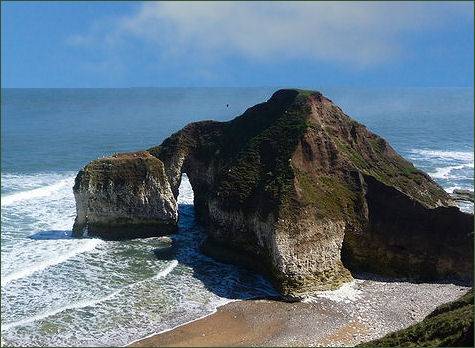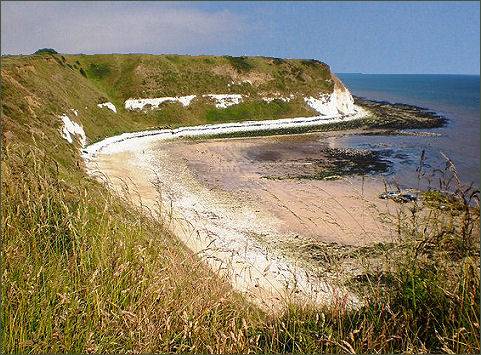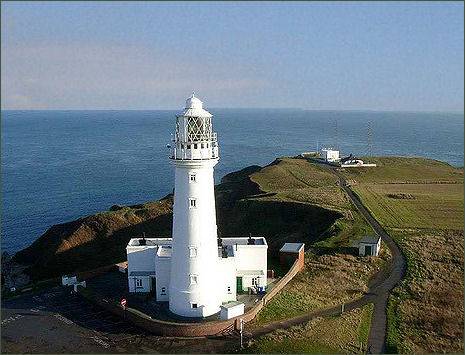Flamborough Head
OS grid reference:- TA 154 755-TA 200 685
Flamborough Head with its gleaming white chalk cliffs which drop sheer into the North Sea, is situated between the Filey and Bridlington bays on the east Yorkshire coastline. The cliffs at Flamborough Head are designated a Site of Special Scientific Interest for both geological and biological significance.


The headland is one of the most spectacular areas of chalk cliffs in Britain, it is is 8 miles (13 km) long, as well as its distinctive white cliffs, there are coves, sea caves and stacks along the coastline. Flamborough Head has two standing lighthouse towers on its cliffs, the oldest dating from 1669 and Flamborough Head Lighthouse which was built in 1806. The lighthouse was built by John Matson of Bridlington and is 85 feet tall. The lamp mechanism rotates constantly on a bed of mercury.
The name Flamborough is thought to be derive from a word meaning "the place of the flame". Other sources claim that it derives from "Flaneberg", possibly from the Saxon "Flaen" meaning a dart, which the shape of the headland resembles. The huge bank and ditch earthwork of Danes Dyke divides the Flamborough Head peninsula from the mainland. The exact date of the construction of the dyke is not certain, while some date it to the Iron Age, other sources suggest similarities to post-Roman earthworks.


The coastal village of Flamborough stands on headland The village lies around 4 miles (6 km) to the north-east of the popular coastal resort town of Bridlington. It is thought to have been originally settled over 1,100 years ago by Vikings, it is mentioned as "Fleneburg" in the Domesday Survey of 1086. Prior to this, there was a Roman presence, which is evidenced by Beacon Hill, once the site of a Roman signal station.
Flamborough Head is one of the most important seabird colonies in Europe. A variety of seabirds including gulls, fulmars, razorbills, northern gannets, auks, kittiwakes and Atlantic puffins nest on the cliffs.
Bempton Cliffs, which lies on the north side of Flamborough Head, has an RSPB reserve and visitor centre which provides guided walks of the area.
